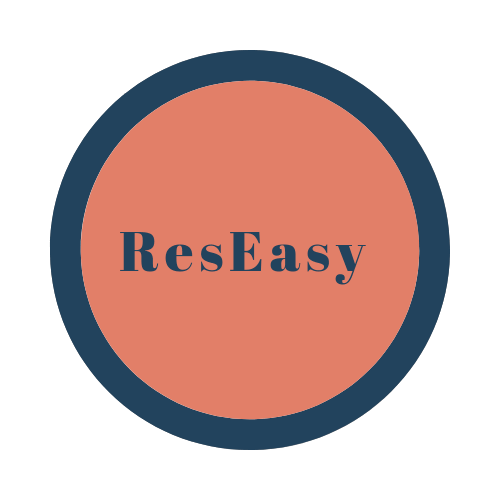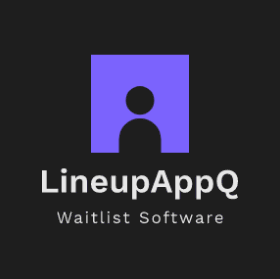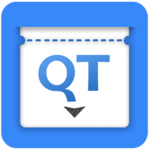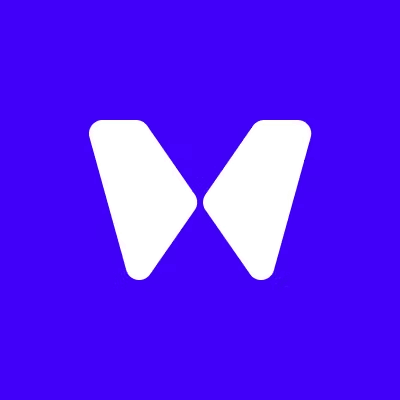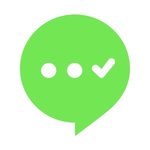Yes, most wait list software can be accessed from numerous devices and platforms, including PCs, laptops, tablets, and smartphones. This enables for easy access and control of wait lists at any time and from any location. Wait list data can also be linked in real time across devices using cloud technology, guaranteeing that information is correct and up to date. However, you should check with the software developer to confirm compatibility with your preferred devices and platforms.
List of Best Wait List Software
ResEasy, the premier reservation software tailored for the hospitality industry. Ideal for all types of businesses, from cozy cafes to bustling hotels, our platform offers effortless automation of the reservation process and enables online bookings t...Read More ResEasy App
BumbleBee, the go-to project management solution that transforms team collaboration. Through its intuitive interface and innovative features like live collaboration, task automation, and data insights, BumbleBee enables businesses to boost productivi...Read More BumbleBee
GuestBridge Reserve is a reservation management software that streamlines the booking process, enhances customer satisfaction, and maximizes table utilization. With its user-friendly interface, real-time updates, and advanced analytics, GuestBridge R...Read More GuestBridge Reserve
Hostme is a solution for managing your restaurant. With our user-friendly software, you can effortlessly handle reservations, table assignments, and events. Our cutting-edge features, such as real-time updates, online waitlists, and seamless integrat...Read More Hostme
NextMe is a waitlist and appointment management solution for various industries. Improve customer satisfaction, reduce costs, and boost efficiency with its intuitive features, live communication tools, and flawless multi-device integration. Say goodb...Read More NextMe
Waitlist Me is a software created to streamline waitlist and reservation organization. Its text-based updates allow for timely communication with customers, enhancing overall satisfaction. Gain greater visibility and improve business efficiency with...Read More Waitlist Me
LineupApp is a waitlist solution designed to transform queue management for businesses. With LineupApp, customers have the freedom to wait on their own terms, resulting in an enhanced overall experience. This robust software features a quick free sig...Read More LineupApp
QueuePad is a queuing solution that optimizes customer flow, reduces wait times, and enhances service efficiency. This versatile system is suitable for various industries and promises a seamless, organized experience, driving customer satisfaction an...Read More QueuePad
QueueTix is a queue and booking management solution. Our revolutionary app simplifies operations and enhances customer satisfaction. Say farewell to lengthy queue times and disgruntled patrons with our intelligent waitlist system. Enhance efficiency...Read More QueueTix
Waitwhile is an all-encompassing and versatile software that aims to streamline customer flow and improve overall efficiency. With its virtual waitlist, appointment scheduling, and real-time analytics, Waitwhile caters to a diverse range of industrie...Read More Waitwhile
TablesReady is a waitlist management tool for businesses. With our user-friendly app, improve your customer flow and streamline operations through integrated text messaging. Enhance the overall customer experience by eliminating long wait times and i...Read More TablesReady
Obee is solution for simplifying the reservation and table management process for your restaurant. Our software offers online reservations, automated confirmations, and seamless marketing integrations to enhance efficiency and provide exceptional cus...Read More obee
Learn More About Wait List Software
- What Is Wait List Software?
- What Are The Recent Trends In Wait List Software?
- Benefits Of Using Wait List Software
- Important Factors To Consider While Purchasing Wait List Software?
- What Are The Key Features To Look For In Wait List Software?
- Why Do Businesses Need Wait List Software?
- How Much Time Is Required To Implement Wait List Software?
- What Is The Level Of Customization Available In Wait List Software?
- Which Industries Can Benefit The Most From Wait List Software?
- Conclusion
What Is Wait List Software?
Wait list software is a useful tool that helps organizations manage their wait lists efficiently and effectively. It is a digital system that automates the process of tracking customers or clients who are waiting for a specific product or service. One of the most important characteristics of wait list software is real-time updates, which enable businesses to monitor and manage their wait lists in real time.
This prevents confusion and ensures that consumers are promptly informed of any changes to their queue status. Some wait list software has complex capabilities such as customer segmentation, which enables firms to target certain groups of customers with individualized notifications and updates. This helps to boost client involvement and satisfaction.
Furthermore, wait list software frequently connects with other business tools such as scheduling software and customer relationship management systems, giving a complete solution for managing the wait list process. Another advantage of wait list software is its capacity to gather useful information and insights. Businesses that analyze wait list data can obtain a deeper insight of their customers' interests and behavior, allowing them to make data-driven decisions to improve the entire customer experience.
Overall, wait list software is essential for organizations looking to optimize their wait list process, increase customer satisfaction, and make sound business decisions. With its comprehensive capabilities and integrations, it is an invaluable resource for any organization trying to improve wait list management.
What Are The Recent Trends In Wait List Software?
Wait list software has become a vital tool for businesses and organizations that need to manage reservations, appointments, and other sorts of wait lists. As technology advances, various important developments in wait list software emerge, with the goal of improving user experience, automating operations, and providing better business insights.
Let's explore, the latest developments in wait list software and how they can help your organization.
1. Cloud-Based Solutions: One of the most recent trends in wait list software is a transition to cloud-based solutions. This means that the program is stored on the provider's servers and accessible from any device with an internet connection. Cloud-based software eliminates the need for local installations while allowing for remote access and real-time updates. It also supports scalability and automatic backups, making it a more efficient and convenient choice for enterprises.
2. Mobile Integration: With the increased use of smartphones, many wait list software now includes mobile integration, allowing users to manage their wait lists while on the go. This functionality is very handy for firms with a large number of customers or remote locations. It also allows businesses to deliver reminders and updates to clients via SMS or push notifications, which reduces no-shows and boosts customer satisfaction.
3. Automation: Automation is another key trend in wait list software, with the goal of streamlining procedures and saving businesses time. This incorporates functions like automatic waitlist management, appointment reminders, and reservation confirmations. By automating these procedures, organizations may eliminate human error and free up staff time to focus on other important responsibilities.
4. Analysis And Reporting: Data is a significant tool for businesses, and recent wait list software advancements have centered on analytics and reporting features that assist firms in making data-driven decisions. These capabilities provide information into wait times, client flow, and consumer preferences, helping organizations to optimize operations and improve customer satisfaction.
5. Integration With Other Software: Wait list software is increasingly integrating with other company tools to give a more seamless experience. This includes CRM software, POS systems, and scheduling software. Integration enables better data management and communication among many elements of the organization, resulting in increased efficiency and customer service.
Benefits Of Using Wait List Software
Wait list software is a useful tool for streamlining and improving the waitlist management process in any organization or corporation. With its different features and capabilities, this program provides a slew of advantages that can significantly improve your operations.
Here are the primary benefits of using wait list software, so you can make an informed decision when selecting the best one for your needs.
1. Efficient Waitlist Management: First and foremost, wait list software enables the efficient management of waitlists. With automated workflows, you can quickly add, amend, and remove people from the waitlist, saving you time and effort. This not only provides a smooth and structured waitlist, but also lowers the possibility of human error.
2. Real-Time Updates: Wait list software delivers real-time updates and notifications to both you and your clients. This implies that as soon as a seat becomes available, the system will automatically notify the next individual on the waitlist, enhancing communication and lowering the likelihood of lost opportunities.
3. Customizable Features: Waitlist management requirements vary by business or group. Wait list software allows you to personalize the features and settings to meet your individual requirements. This includes establishing priority levels, configuring notifications, and determining reservation limitations.
4. Increased Customer Satisfaction: Nothing frustrates clients more than having to wait for an extended amount of time. The efficiency and real-time updating of wait list software can significantly improve the customer experience. By giving realistic wait times and timely updates, you may increase their overall pleasure and commitment to your company.
5. Data Tracking And Analysis: Another significant benefit of wait list software is its capacity to track and analyze data. This provides insights on customer behavior, such as popular reservation periods and peak hours, allowing you to better manage resources and optimize operations.
6. Cost And Time Savings: Traditional queue management techniques, such as pen and paper or phone calls, can be time-consuming and costly. Wait list software eliminates the need for manual activities, freeing up your employees' time to focus on other vital work. As a result, your company may be able to save money over time.
Important Factors To Consider While Purchasing Wait List Software?
When choosing wait list software, several crucial elements should be considered to guarantee that you are selecting the finest option for your individual requirements.
This buyer's guide will detail the most critical factors to consider when making such a significant investment.
1. Capabilities And Customizability: When assessing wait list software, it is critical to consider the platform's capabilities and amount of customization. Some important features to look for are the ability to add and remove consumers from the wait list, track wait times, and send automatic notifications. Additionally, the software should be adaptable to your company's specific requirements and identity.
2. User-Friendliness: A user-friendly interface is critical to providing a positive experience for both customers and employees. Look for software that is intuitive and simple to use, with clear instructions and prompts.
3. Integration With Existing Systems: If you already have existing systems in place, such as a reservation or appointment booking system, you should select wait list software that integrates effortlessly with them. This will help to prevent disruptions to your existing procedures and ensure a smooth transition.
4. Mobile Compatibility: In today's fast-paced world, customers want to be able to manage their wait time and receive notifications via mobile devices. Make sure the software you purchase has a mobile app or is compatible with mobile devices so that your clients can have a more convenient experience.
5. Protection And Data Privacy: Because sensitive consumer information is maintained on the platform, use wait list software that prioritizes data protection and privacy. Look for features like encrypted data storage and regular backups to safeguard the security of your and your customers' information.
6. Customer Support: It is critical to have dependable and accessible customer service when utilizing any software. Look for vendors who provide complete customer service, including phone, email, and live chat options.
7. Cost And Scalability: When making any purchase, you must always consider your budget. It is critical to assess the cost of wait list software and determine whether it is within your budget. Additionally, assess the platform's scalability and whether it can handle your company's development.
What Are The Key Features To Look For In Wait List Software?
When looking for the best wait list software for your business, seek for vital features that will help you streamline your processes and improve your overall operations.
Here are the major features to consider while assessing the various wait list software options:
1. User-Friendly Interface: An easy-to-use interface is essential for software efficiency and effectiveness. Look for a clean and straightforward structure with simple navigation that will allow you to manage your wait list and reservations without difficulty.
2. Customization Options: Because each organization has distinct demands and preferences, it's critical to select wait list software that allows for customization. This may include branding options, customisable communication templates, and the flexibility to tailor functionality to your individual business model.
3. Real-Time Updates: One of the primary advantages of using wait list software is the opportunity to monitor real-time updates and changes. Make sure the software you chose provides rapid updates to avoid confusion or miscommunication with customers and employees.
4. Multi-Platform Availability: In today's fast-paced corporate climate, it is critical to have access to your wait list software across several platforms. Look for software that is accessible via desktop, mobile, and tablet devices, allowing you to manage your wait list on the go.
5. Integration Options: To increase productivity, search for wait list software that integrates effortlessly with your existing systems, such as POS, online booking, and customer management systems. This will provide a seamless flow of information and data across all of your platforms.
6. Wait Time Management: Because the primary goal of wait list software is to control wait times, it is critical to select a product that has this functionality. Look for ways to track wait times, notify customers when their table is ready, and change wait times based on real-time data.
7. Reservation Management: In addition to managing walk-in customers, many firms use reservations. To avoid utilizing separate systems and creating confusion, use wait list software that can manage both wait lists and reservations.
8. Analytics And Reporting: To acquire important insights and make data-driven decisions, select wait list software that includes analytics and reporting tools. This can contain information like customer wait times, typical turnover rates, and peak hours, helping you to improve your operations.
Why Do Businesses Need Wait List Software?
Wait list software is an indispensable tool for organizations that rely on appointments, reservations, or events. It offers a streamlined and efficient method for managing wait lists, ensuring that no client or guest is left waiting for their turn.
Here are several reasons why businesses use wait list software.
1. Improve Client Experience: Wait list software enables businesses to efficiently manage client queues, resulting in shorter wait times and a better overall experience. This can improve consumer happiness and loyalty.
2. Increase Operational Efficiency: Wait list software allows organizations to manage their wait lists in real time, removing the need for manual record-keeping and decreasing human errors. This saves time and effort for employees, allowing them to concentrate on providing excellent service.
3. Optimize Resource Allocation: Wait list software enables firms to monitor the availability of resources such as employees, equipment, and facilities. This aids in resource allocation and prevents overbooking, which can result in disgruntled clients.
4. Reduce No-Shows: Wait list software frequently includes features like automated reminders and confirmations, which reduce the likelihood of no-shows. This ensures that firms may make the best use of their resources while minimizing income loss.
5. Collect Valuable Data: Wait list software gathers information on consumer wait times, no-show rates, and preferences. This information can be utilized to create data-driven decisions that improve operations and the overall customer experience.
6. Customizable Features: Many wait list software packages have customizable features that may be tailored to meet the specific demands of a business. This enables firms to design a bespoke and effective wait list management solution that matches their specific needs.
7. Easy Integration: Wait list software may work with other business systems like online booking and payment platforms, POS systems, and customer relationship management tools. This makes it easier to manage customer information, payments, and appointments in a one area.
How Much Time Is Required To Implement Wait List Software?
Implementation time for wait list software varies according to the software and the complexity of your company requirements. On average, properly implementing wait list software might take anything from a few days to a few weeks. The first stage in the implementation process is to set up the program, which includes creating an account, assigning user permissions, and adjusting the wait list settings based on your company's needs.
Next, you'll need to interface the software with your existing systems, such as your POS or online reservation system. This stage may necessitate some development work, depending on the compatibility of your existing systems with the wait list software. Following the initial setup and integration, you will need to train your team on how to utilize the software efficiently.
This could take a few days or more, depending on the software's complexity and the amount of employees that will use it. Finally, you will need to test the software to ensure it is working properly and make any necessary changes before fully implementing it in your company. It is crucial to note that the time necessary for deployment may also be determined by the software provider's quality of support and your team's previous expertise with similar software. As a result, it is critical to conduct research and select a reputed provider who provides effective support to ensure a smooth and fast implementation process.
What Is The Level Of Customization Available In Wait List Software?
Wait list software allows for varied amounts of customisation, based on the software's individual features and capabilities. This enables organizations to customize the program to meet their individual needs and objectives, making it an effective tool for managing wait lists and reservations. At a basic level, most wait list software allows users to change features like the style and design of the wait list interface, as well as the sorts of messages and reminders that consumers receive.
Some software also supports minor branding customizations, such as adding a corporate logo or modifying the color scheme to reflect the brand's look. There are software choices available for firms with more advanced requirements that allow for greater customisation. This includes the ability to construct custom fields and forms, which allow customers to provide unique information.
It also supports the establishment of custom statuses and labels, making it easier to track and manage the various stages of the wait list process. In addition, some wait list software allows you to set multiple wait list criteria and preferences. This can include options for prioritizing customers on the wait list, sending notifications, and assigning tables or appointments.
These customization options allow organizations greater control and flexibility in managing their wait lists. Ultimately, the level of flexibility accessible in wait list software is determined by the business's specific demands and goals. Businesses must carefully examine their requirements and compare many software solutions to select the one that provides the appropriate level of customisation.
Which Industries Can Benefit The Most From Wait List Software?
Wait List Software can be a game changer in many businesses where handling appointments, reservations, and scheduling is vital to daily operations. It provides a streamlined and effective approach to managing waitlists, hence increasing customer happiness and overall corporate success. Wait List Software can greatly help the hospitality business, which includes restaurants, hotels, and entertainment venues.
These firms frequently operate on a first-come, first-served basis and experience substantial customer churn. Wait List Software allows them to simply manage the backlog, alert customers when their table or room is ready, and cut wait times. It also allows them to collect consumer data and preferences, allowing them to deliver more personalized service and improve the entire dining or stay experience.
Healthcare is another business that might benefit greatly from Wait List Software. Medical facilities can use cloud-based technologies to better manage patient appointments, eliminate no-shows, and increase patient satisfaction. The platform also includes automated reminders, real-time updates, and online booking, which make it easier for users to schedule and manage their visits.
Overall, it enables healthcare providers to optimize their schedules, reduce wait times, and improve patient retention. Retail enterprises such as salons, spas, and beauty clinics can also benefit from Wait List Software. They may improve the client experience and increase repeat business by properly managing their reservations and services. The software also tracks employee schedules and performance, allowing for more efficient scheduling and synchronization.
Furthermore, its reporting and analytics features help organizations discover peak times, assess customer trends, and make data-driven decisions. Wait List Software is very valuable to the education industry, particularly in schools and universities. The capacity to handle class schedules, student appointments, and events streamlines administrative duties and increases student-faculty collaboration. Students may manage their schedules more easily and avoid missing important lectures or meetings thanks to features such as online booking and reminder. This leads to greater student satisfaction and academic performance.
Conclusion
To summarize, buying reliable and effective wait list software may tremendously benefit businesses of all sizes by automating the wait list management process and improving the customer experience. When selecting the best wait list software, you should carefully consider your individual requirements and goals, such as interaction with existing systems, pricing and scalability choices, and customer support.
Consider the important features provided by different wait list software suppliers, such as real-time notifications, customized wait time estimations, and data analytics tools. Reading reviews and comparing customer satisfaction ratings can also help you understand how well the product performs and how it works. Finally, investing in high-quality wait list software can help organizations optimize their operations, increase productivity, and boost customer happiness. With the information in this buyer's guide, we hope you can make an informed selection and find the best wait list software for your specific business needs.
Wait List Software FAQ's
Can Wait List Software Be Accessed Across Multiple Devices And Platforms?
Is Wait List Software Future-Proof And Adaptable To Emerging Technologies Like AI, Blockchain Or IoT?
Yes, Wait List Software is future-proof and compatible with emerging technologies like as AI, blockchain, and IoT. Wait List Software is continuously being updated to incorporate new technologies as they emerge. This guarantees that the software is still relevant and efficient for organizations of all sizes. It also increases efficiency, accuracy, and customer experience. Rest assured, Wait List Software is ready to handle any future technological breakthroughs.
Is There A Free Trial Offered To Assess Wait List Software Before Committing?
Some wait list software vendors provide a free trial period, allowing users to evaluate the features and functioning before committing to a subscription. This enables firms to evaluate the software and make an informed judgment about whether it satisfies their requirements. It is recommended that you take advantage of free trials to completely analyze the software's features and determine whether it is a good fit for your company.
Does Wait List Software Offer Data Security Features And Meet Regulatory Compliance Standards?
Yes, most wait list software includes data security safeguards to secure the sensitive information of patients, customers, and clients. They commonly use encryption and secure cloud storage to protect data from cyber threats. Furthermore, many wait list software solutions adhere to industry laws such as HIPAA, GDPR, and ISO 27001, assuring data security and regulatory compliance.
Can Wait List Software Integrate Seamlessly With Existing Tools And Platforms?
Yes, well-designed waitlist software should interact effortlessly with your current tools and platforms. This can save you time and effort because it eliminates the need to manually enter data into numerous systems.
With correct integration, waitlist software may function in unison with your customer relationship management, ticketing, and communication solutions, resulting in a more streamlined and efficient process. Choose waitlist software with strong integration capabilities to ensure a seamless and hassle-free experience.

